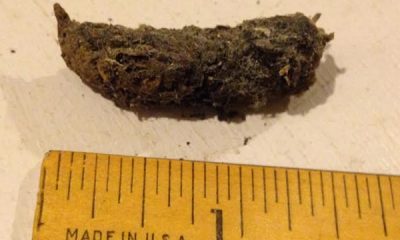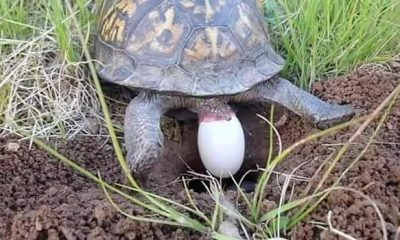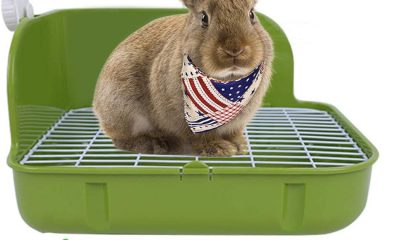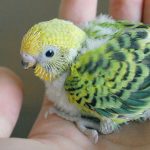Birds
Parakeets Breeding & Mating # All that You Need to Know
Parakeets are indeed one of the best options if you are looking to keep pets. However, if you have a pair of parakeets, you would perhaps want to check out the mating and breeding behavior of your parakeets. In essence, it would be worthwhile to understand a great deal about when is the breeding season for parakeets, their mating behavior, and many other relevant facts.
Contents
- 1 When is Breeding Season for Parakeets?
- 2 What is the Proper Parakeet Breeding Age?
- 3 How to Encourage Budgies to Breed?
- 4 How Often do Parakeets Lay Eggs?
- 5 How Long Does it take for Parakeet Eggs to Hatch?
- 6 Parakeet Mating Behaviour #How Do You Know if Parakeets are Mating?
- 7 Why is my Parakeet Sitting on the Bottom of the Cage?
- 8 How to Incubate Parakeet Eggs?
- 9 Concluding Thoughts on Parakeets Mating Behavior

When is Breeding Season for Parakeets?
Parakeets do not necessarily have a season for mating. However, you would find them mating in spring. While they would be ready to meet almost any time of the year, we would find that the hormones would be at peak during the springs. Mating in springs has been known to help produce high-quality chicks.
There is no specific season for parakeets breeding. The parakeets would ideally begin perching close together. She may choose to regurgitate the food on the male, while she may lift her tail. The mating and breeding and close proximity are likely to go for a considerably more extended period.
Parakeets would ideally require the favorable conditions that are conducive to mating. These conditions would need you to provide conditions such as 10 to 12 hours of proper daylight, enough water, and good food along with an appropriate nesting area. Let the birds have adequate room for making changes in the nesting area.
What is the Proper Parakeet Breeding Age?
The breeding age for a parakeet would be ideally dependent on the species. Under ideal conditions, the right breeding age for a parakeet would be somewhere between 3 to 5 months.
However, do note that this can be too young as the age for your birds to attain a breeding perfection. We would advise you to wait till your bird is at least 10 months old to ensure better health for your parakeets and the chicks that they will give birth to.
It would be ideal for checking out the female to understand whether your parakeet is ready to breed. Check the hen and find if she has developed a brown, crusty-looking cere. This would be the perfect time to set up nesting boxes so that your parakeet pair can begin breeding.
How to Encourage Budgies to Breed?
There are times when your parakeets may not want to breed or find themselves discouraged to mate and breed. In such cases, you may need to encourage your birds to improve the conditions for breeding. There are a few ways you can help your parakeets mate properly.
Some of the best options to encourage your breeding behavior can include the following tips:
Provide Enough Daylight
Around 10 to 12 hours of daylight would ensure proper breeding behavior. In essence, the breeding behavior is stimulated by the longer days. Thus it would be practical to provide enough daylight for the parakeets and their nest. If there are any dark areas where your cage is located, make sure to provide enough artificial light to ensure better breeding behavior.
Keep the Pair Together
Ensure that the parakeet pair is always together. The close proximity will ensure better breeding behavior, and thus you can be assured of possible breeding. Make sure that the parakeets you pick are not closely related. That would perhaps result in genetic mutations and something you would not want to happen. The budgies that you pair should be at least one year old. This will ensure better chicks.
Provide Proper Food
A balanced diet will ensure better health, and thus your parakeets will be in a better condition to breed and mate. In fact, the nutritional requirements would considerably change when your birdies are getting ready to breed. Make sure that calcium levels of the hen are improved. This can be achieved by providing additional sources of calcium to your birdie. Increasing the food quantity offered to the parakeet’s pair is yet another right step in encouraging their breeding.
Fitness
One of the best ways to ensure that your parakeet pair is healthy and fit is to ensure that they have enough of a flight. Providing food at one end perching place at the other would provide a better way to ensure that your parakeet pair is at a good fitness level. Encouraging the flight through natural branches and other mental stimulants an improve the fitness levels.
Well, this was all about the breeding and mating behavior of the parakeets. Now, let us see a few facts on how often parakeets lay eggs or how long does it take for eggs to hatch and much more such questions.
How Often do Parakeets Lay Eggs?
Well, as soon as the parakeets have mated, the female begins to lay eggs right away. It may be possible that your parakeet would lay one egg per day. Each clutch of eggs would ideally be four to eight eggs. Of course, the actual number may vary, but the total number of eggs in one crutch should be around 4 to 8 depending upon the age of the female bird and the other contributing parameters such as health and fitness.
As for the egg-laying schedule, you may witness them laying their eggs one or two eggs every two days.
The female is known to lay eggs all year round. It may not be uncommon to find them keep laying eggs regularly if they get enough food and are happy.
How Long Does it take for Parakeet Eggs to Hatch?
The parakeet actually begins hatching her eggs within around 17 to 20 days. Each of the eggs will need around 18 days to develop fuel, and after that, they will begin to hatch. It takes around 18 days for a parakeet egg to hatch from the day female parakeet incubating them. The eggs will begin hatching in the order they were laid. Any egg that remains unhatched after 23 days will not produce a chick.
The female parakeet ideally begins incubating the eggs soon after laying the second egg. In essence, each of the eggs needs to 18 days to hatch. That would mean the first egg should hatch on 18th day and so on.
The female parakeet will begin laying her eggs – typically one egg every alternate day until her crutch is completed. A crutch should consist of four to eight eggs depending upon the age and health conditions of the parakeet. It may be possible to find the first and second egg to hatch on the same day.
Parakeet Mating Behaviour #How Do You Know if Parakeets are Mating?
The actual mating of the parakeets lasts a shorter span of time. However, you can witness a few behavioral indicators that lead up to mating. You would see the male parakeet continuously courting the female. He will tap her beak with his in order to stimulate her. The female will keep lifting her tail in the air frequently.
The female bird will also raise her wings a little to let the male parakeet know that his wooing efforts have been successful and she is ready to mate.
Yet another indication that the parakeets are mating is the way they perch close to each other. The female may even regurgitate her food on the male which one of the ways that a parakeet shows its affection. You may also witness the male feeding the female. In fact, the male continues to feed her when she is hatching the eggs.
The following video should provide you with a better understanding of the parakeet mating call and help you find out if they are mating:
Why is my Parakeet Sitting on the Bottom of the Cage?
If you find your parakeet sitting at the bottom of the cage, it can be because of several reasons. In fact, there is no specific way or reason to arrive at to understand the behavior. But, for an active bird like a parakeet, it may be quite unusual.
One of the possible reasons why your parakeet sits at the bottom of the cage could be she (if it is a female parakeet) has begun laying eggs. If that is the case, it may be a good idea not to interfere with it. If it comes out for popping or other needs, it is a sign that the parakeet is healthy.
Other likely reasons for a parakeet sitting at the bottom of the cage can be:
- It may be its way of exploring the things at the bottom. They may be looking up to jump up and down and exploring the possibility of such a playtime.
- It may be sitting at the bottom to get some warmth. Every animal loves warmth, and if they find something that generates warmth, they would prefer sitting in there for a prolonged period of time.
This was the frequency of parakeets laying eggs and hatching them. Also, we understood their mating behavior. Now, let us see how to incubate parakeet eggs?
How to Incubate Parakeet Eggs?
The female parakeet should be able to handle the incubation process on its own, and you would not need to do anything under ideal circumstances. The incubation will ideally begin as soon as the parakeet has two or three eggs from her crutch.
The process of incubation begins when the parakeet begins to sit tightly on them – for almost 24 hours. During this time, the male parakeet can be seen feeding the female. While she is likely to begin incubating the eggs right away, that should not ideally be an issue. You can count on the days she begins to hatch, and each of the eggs will take 18 days to hatch completely.
You should be able to differentiate the fertile and infertile eggs. Take an egg and hold it against a flashlight. If the egg is fertile, you should find it has a yellow glow and the blood vessels. It should ideally look like a kidney bean. However, if you see only a yellow glow, it should be indicative of the infertile egg. While this can be an easy option to check the fertility of the egg, it is not recommended to check the eggs this way as it may disturb the parakeet and she may choose to abandon them altogether.
If the crutch of the eggs exceeds the right count and you feel the parakeet may not be able to incubate them properly. You may choose to incubate them yourself. This can help take off some pressure from the female parakeet.
It may be a good idea to opt for some commercially available incubators that can help you simplify the process. The eggs can be incubated to 104 to 110 degrees Fahrenheit to simulating the body temperature of the mother. When you find that the eggs begin hatching, you should remove them from the incubator and start feeding them yourself.
Concluding Thoughts on Parakeets Mating Behavior
Breeding parakeets may be a very wonderful task. However, it would be a good idea to ensure that you have taken all the precautions to help your parakeet mate, breed, and incubate in a very healthy manner. No wonder, it would be a great choice to encourage your budgies to breed.
The tips and ideas outlined above should ideally help you. Hope, we have served you with the best possible information on parakeets mating behavior, their eggs laying and hatching frequency, and much more. For any suggestions, you can write to us in the comments section below.

-

 Skunk4 years ago
Skunk4 years agoWhat Does Skunk Poop Look Like? Images & Identifications
-

 Bunny5 years ago
Bunny5 years agoHow to Get Rid of Mites on Rabbits? #NaturalRemedies #Video
-

 Turtles5 years ago
Turtles5 years agoHow To Take Care of Turtle Egg At Home?
-

 Horse4 years ago
Horse4 years agoHow Much Weight Can a Horse Carry? #Clydesdale #Friesian #Mustang #Draft
-

 Turtles4 years ago
Turtles4 years agoHow to Take Care of Snapping Turtle Eggs? #Incubating #Hatching
-

 Bunny5 years ago
Bunny5 years agoHow Big Do Dwarf Bunnies Get? – Amazing Facts #Images
-

 Bunny4 years ago
Bunny4 years agoHow to Potty Train a Rabbit in House? Tips on Litter Training
-

 Turtles4 years ago
Turtles4 years ago8 Basking Rocks/ Platforms for Turtles – A Perfect Guide











